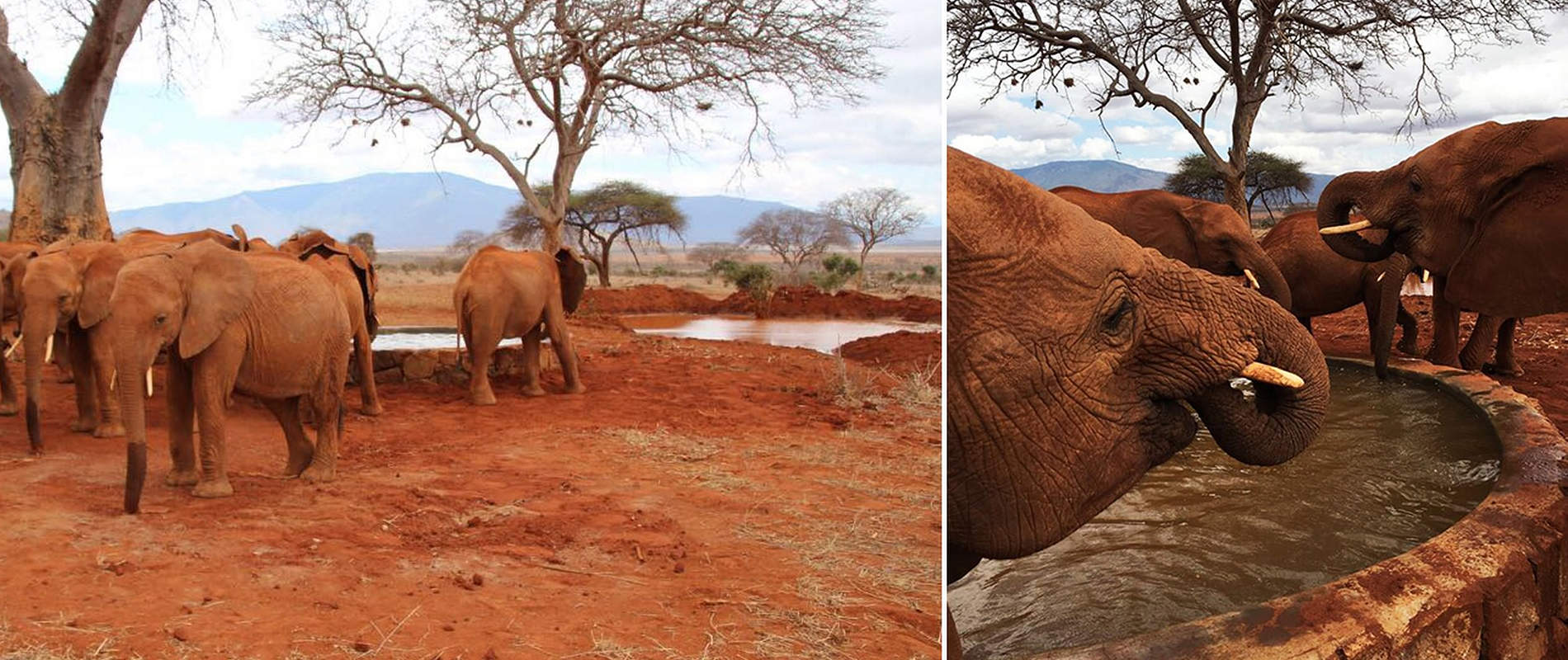Today we rescued an orphan elephant in Tsavo and as this calf arrives to our Nairobi Nursery, we wanted to share with you a glimpse into some of our activities in Tsavo over the past 7 days
Today we rescued an orphan elephant in Tsavo and as this calf arrives to our Nairobi Nursery, we wanted to share with you a glimpse into some of our activities in Tsavo over the past 7 days. Work being carried out in collaboration with the Kenya Wildlife Service, as we endeavour to protect and preserve wild lives. Below we provide a series of photographs, each followed by a descriptions, from which we hope you get a sense of the breadth of our efforts and what, with your help, we are able to achieve for wildlife in this region alone in just a week. If you are inspired by these stories, please share them. As the more of us that stand together for wildlife, the greater the positive impact we can make this week and every week after that. The more of us that stand together for wildlife, the greater the positive impact we can make this week and every week after that.


This morning we flew an orphaned baby elephant from Voi to our Nursery in Nairobi, so that we might be best positioned to try and breathe life back into this elephant’s limp body. A victim of the drought that is taking hold in the Southern sector of Tsavo National Park, our teams transported the calf using our newly acquired helicopter, allowing for the shortest possible travel time, as every minute counts for this baby who is in a terribly dehydrated and weakened state.


Just two days ago, we received a report from the Kenya Wildlife Service (KWS) about a cheetah that had become trapped between the new standard gauge railway’s fence. KWS Veterinarian Dr. Poghon, who heads the DSWT funded Tsavo Mobile Veterinary Unit, attended the scene, relocating the cheetah back into the park, ensuring he was revived with meat on hand to help renew his strength.
Wildlife is facing incredibly challenging drought conditions in southern Tsavo and tragically, elephants are beginning to die from the drought. It is not so much a shortage of water but a shortage of food which is the challenge this year.


Much needed rain threatened the drought stricken southern area of Tsavo as our teams were working to ensure all water troughs at boreholes drilled by DSWT were cleaned, something that is done weekly, to ensure the efficiency and effectiveness of boreholes in providing critical water points for all animals.
While undertaking a daily surveillance flight one of our Aerial Teams was delighted to sight this female black rhino with her new calf, adding a new member to the population of 100 black rhino left in Tsavo.

This little orphaned kudu was rescued and is now being cared for at our field headquarters in Kaluku, alongside another five orphan kudus, a little dik dik and a duiker. Where they can then join up with wild members of their species that live in the area and gradually assimilate back into Tsavo's populations.

During a daily patrol, one of the Trust's field teams was excited to spot this herd of rare Hunter’s Hartebeests (aka Hirola), a critically endangered species estimated to number between just 300-500. Another of the species our Anti-Poaching patrols with KWS are helping to keep safe from bushmeat poachers.



Three months on and three of the four little lion cubs, orphaned when their mother was killed when out hunting, are thriving. Sadly the fourth lion cub did not survive. Working with Taita Hills Sanctuary rangers we’ve ensured the cubs have been regularly fed over the last few months and watched as they have grown stronger and successfully joined a pride. We believe the dominant male in the area to be their father, as he has been extremely accepting of them and he is even hunting for them.



We have built a new water trough and mud bath in Voi, benefiting the 22 milk dependent orphan elephants we are rehabilitating at the Voi Reintegration Unit, as well as passing wild elephants and other species.
Our water bowsers are busy across the Tsavo region, filling up drying water pans to best ensure access to water for all wild animals, particularly in areas with better browse and food available but limited water. We are able to transport up to 200,000 litres of water in each bowser load.









